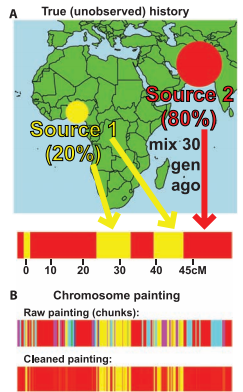This article originally appeared on MotherboardHumans have a long and super complicated history: Someone became a human in Africa and then started walking, some of us mixed with Neanderthals, others didn't, some of us hopped across that land bridge in Russia, others headed for Europe instead. A new map helps us make sense of it all and can help tell you where you came from.The genetic atlas was put together by researchers at Oxford University and University College London and covers 4,000 years of human migration and mating histories for 95 different populations in Europe, Africa, Asia, and South America.To assemble it, researchers analyzed the DNA of nearly 1,500 people and traced them back to their origins. The DNA was then compared with each other for similarities.The results give us a glimpse into human history. The map will tell you, for example, that the average Irish person is 9 percent Greek, 4 percent Italian, 45 percent Scottish, and 26 percent Norwegian. An accompanying research paper about the map's inception was published in Science. The map also shows how important historical events shaped the course of genetic human history. You probably already knew that Genghis Khan and his Mongol hordes spread their genes far and wide, but did you know that the average Turk is roughly 3.7 percent Mongol, while the Uyghur people of Western China are roughly 25 percent Mongol?Much of the map aligns with previous theories about human migration, but researchers say there were some surprises."Because our approach uses only genetic data, it provides information independent from other sources … We see evidence of previously unrecorded genetic mixing," Simon Myers of Oxford University said.The map tells all sorts of genetic stories, from the Arab slave trade of the 7th century to the influence of China's Silk Road and the migration of the Spanish conquest. It's definitely worth poking around a bit.
The map also shows how important historical events shaped the course of genetic human history. You probably already knew that Genghis Khan and his Mongol hordes spread their genes far and wide, but did you know that the average Turk is roughly 3.7 percent Mongol, while the Uyghur people of Western China are roughly 25 percent Mongol?Much of the map aligns with previous theories about human migration, but researchers say there were some surprises."Because our approach uses only genetic data, it provides information independent from other sources … We see evidence of previously unrecorded genetic mixing," Simon Myers of Oxford University said.The map tells all sorts of genetic stories, from the Arab slave trade of the 7th century to the influence of China's Silk Road and the migration of the Spanish conquest. It's definitely worth poking around a bit.
Advertisement

